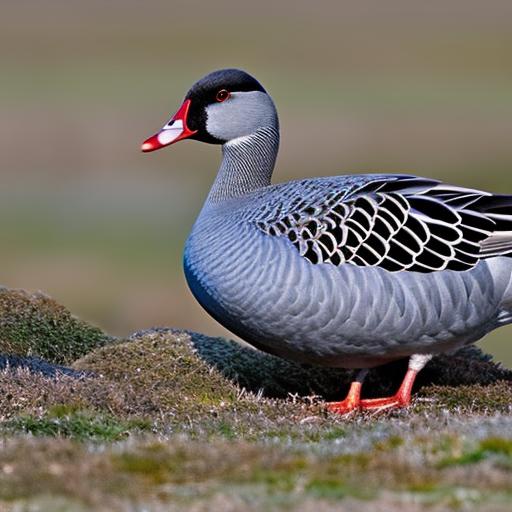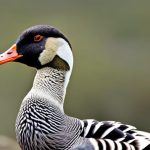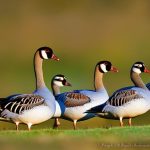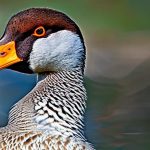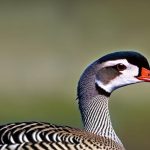Grey geese are a diverse group of waterfowl that belong to the Anatidae family. They are known for their distinctive grey plumage and are found in various parts of the world. Understanding the different breeds of grey geese is important for conservation efforts and for appreciating the unique characteristics of each breed.
Key Takeaways
- Grey geese are a diverse group of birds with unique characteristics and adaptations.
- The Greylag Goose is the most common grey goose breed, found throughout Europe and Asia.
- The Lesser Canada Goose is a smaller grey goose breed, commonly found in North America.
- The Bar-headed Goose is a grey goose adapted for high altitudes, capable of flying over the Himalayas.
- The Red-breasted Goose is a rare and endangered grey goose breed, with only a few thousand individuals left in the wild.
- Grey geese have unique breeding habits and nesting behaviors, including monogamous pair bonding and communal nesting.
- Conservation efforts are underway to protect grey geese and their habitats, including habitat restoration and protection, hunting regulations, and captive breeding programs.
- Protecting grey geese is important not only for their ecological role, but also for their cultural significance and beauty.
The Greylag Goose
The Greylag Goose (Anser anser) is the most common breed of grey goose. It is a large bird, measuring around 30-37 inches in length and weighing between 5-10 pounds. The Greylag Goose has a grey-brown plumage with a pale belly and a distinctive orange beak. It is known for its loud honking call.
The Greylag Goose is native to Europe and Asia, but it has also been introduced to other parts of the world, including North America. It prefers wetland habitats such as lakes, rivers, and marshes. During the breeding season, it builds its nest on the ground near water.
Interesting facts about the Greylag Goose include its long lifespan, with some individuals living up to 30 years. It is also known for its strong pair bonds, with mates staying together for life. The Greylag Goose is a highly social bird and often forms large flocks during migration.
Lesser Canada Goose
The Lesser Canada Goose (Branta canadensis parvipes) is a smaller breed of grey goose that is found in North America. It measures around 22-30 inches in length and weighs between 3-6 pounds. It has a dark grey-brown plumage with a black head and neck, and a white chinstrap.
The Lesser Canada Goose is similar in appearance to other breeds of Canada Geese, but it is smaller in size. It has a shorter neck and a more rounded head compared to other breeds. It is also known for its distinctive honking call.
The Lesser Canada Goose is found in a variety of habitats, including lakes, rivers, and grasslands. It breeds in the northern parts of North America and migrates south during the winter months.
The Bar-headed Goose
The Bar-headed Goose (Anser indicus) is a breed of grey goose that is adapted for high altitudes. It measures around 27-30 inches in length and weighs between 4-7 pounds. It has a grey-brown plumage with a white face and a black neck.
One of the unique physical characteristics of the Bar-headed Goose is its ability to fly at high altitudes. It has been recorded flying over the Himalayas at heights of up to 29,000 feet. This makes it one of the highest-flying birds in the world.
The Bar-headed Goose is native to Central Asia and is found in countries such as Mongolia, China, and India. It prefers open grasslands and wetlands for feeding and breeding.
The Bean Goose
The Bean Goose (Anser fabalis) is a breed of grey goose that is known for its unique appearance. It measures around 27-33 inches in length and weighs between 5-9 pounds. It has a dark grey-brown plumage with a pale belly and distinctive orange legs and beak.
The Bean Goose is similar in appearance to the Greylag Goose, but it has a more slender body and a longer neck. It also has a different honking call, which is higher-pitched compared to the Greylag Goose.
The Bean Goose is native to Europe and Asia and is found in countries such as Sweden, Finland, Russia, and China. It prefers wetland habitats such as lakes, rivers, and marshes.
The Pink-footed Goose
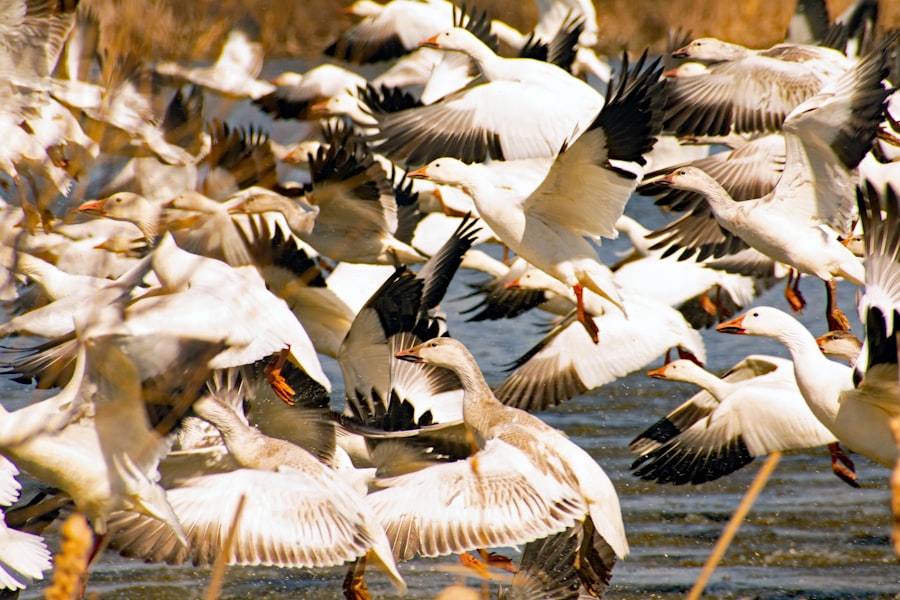
The Pink-footed Goose (Anser brachyrhynchus) is a breed of grey goose that is known for its pinkish tinge. It measures around 25-30 inches in length and weighs between 4-7 pounds. It has a dark grey-brown plumage with a pinkish belly and distinctive pink feet.
The Pink-footed Goose is native to Greenland and Iceland, but it also breeds in parts of Europe, including Norway and the United Kingdom. It prefers wetland habitats such as salt marshes and estuaries.
The Pink-footed Goose is a highly social bird and often forms large flocks during migration. It has a loud honking call and is known for its strong pair bonds.
The White-fronted Goose
The White-fronted Goose (Anser albifrons) is a breed of grey goose that is known for its striking facial markings. It measures around 23-30 inches in length and weighs between 3-7 pounds. It has a dark grey-brown plumage with a white face and a distinctive white patch on its forehead.
The White-fronted Goose is native to the Arctic regions of North America, Europe, and Asia. It prefers wetland habitats such as lakes, rivers, and marshes. During the breeding season, it builds its nest on the ground near water.
The White-fronted Goose is a highly migratory bird and travels long distances during migration. It forms large flocks during the winter months and is known for its loud honking call.
The Red-breasted Goose
The Red-breasted Goose (Branta ruficollis) is a rare and endangered breed of grey goose. It measures around 20-22 inches in length and weighs between 1-2 pounds. It has a dark grey-brown plumage with a red breast and a black head.
The Red-breasted Goose is native to the Arctic regions of Russia and Siberia. It breeds in remote tundra habitats and migrates south during the winter months. It is known for its small population size and is considered one of the most threatened waterfowl species in the world.
Threats to the Red-breasted Goose include habitat loss, hunting, and climate change. Conservation efforts are underway to protect this endangered breed, including the establishment of protected areas and international agreements.
Grey Geese Breeding Habits and Nesting Behaviors
Grey geese have different breeding habits and nesting behaviors depending on the breed. Some breeds, such as the Greylag Goose and the Lesser Canada Goose, build their nests on the ground near water. They lay around 4-8 eggs and both parents take turns incubating the eggs.
Other breeds, such as the Bar-headed Goose and the Bean Goose, also build their nests on the ground but in more remote areas. They lay around 3-6 eggs and both parents take turns incubating the eggs.
The Pink-footed Goose and the White-fronted Goose also build their nests on the ground near water. They lay around 3-5 eggs and both parents take turns incubating the eggs.
Protecting breeding grounds is important for the conservation of grey geese breeds. Wetland habitats are crucial for nesting and raising young, so efforts to preserve and restore these habitats are essential.
Grey Geese Conservation Efforts: Protecting these Majestic Birds
Conservation efforts are underway to protect grey geese breeds and their habitats. These efforts include the establishment of protected areas, such as national parks and wildlife refuges, where grey geese can thrive.
International agreements, such as the Ramsar Convention on Wetlands, also play a role in protecting wetland habitats that are important for grey geese. These agreements aim to conserve and sustainably use wetlands around the world.
Individuals can also get involved in conservation efforts by supporting organizations that work to protect grey geese and their habitats. This can include volunteering, donating, or participating in citizen science projects.
Grey geese are a diverse group of waterfowl that are known for their distinctive grey plumage. Understanding the different breeds of grey geese is important for conservation efforts and for appreciating the unique characteristics of each breed.
The Greylag Goose, Lesser Canada Goose, Bar-headed Goose, Bean Goose, Pink-footed Goose, White-fronted Goose, and Red-breasted Goose are just a few examples of the different breeds of grey geese. Each breed has its own unique physical characteristics, habitat preferences, and nesting behaviors.
Conservation efforts are underway to protect grey geese breeds and their habitats. These efforts include the establishment of protected areas, international agreements, and individual involvement. By working together, we can ensure the survival of these majestic birds for future generations to enjoy.
If you’re interested in learning more about grey geese breeds, you might also find this article on duck mating season from Poultry Wizard fascinating. Understanding the mating habits and behaviors of ducks can provide valuable insights into breeding and raising grey geese. Check out the article here to dive deeper into this topic. Additionally, if you’re considering keeping chickens alongside your geese, Poultry Wizard offers helpful resources like chicken coop run plans (link) and information on chicken coops in Grand Island, NE (link).
FAQs
What are grey geese breeds?
Grey geese breeds are a group of domesticated geese that have grey feathers. They are commonly raised for their meat, eggs, and feathers.
What are some examples of grey geese breeds?
Some examples of grey geese breeds include the Toulouse, Embden, and Pilgrim geese.
What is the size of grey geese breeds?
Grey geese breeds can vary in size, but they are generally larger than other domesticated geese breeds. They can weigh anywhere from 10 to 20 pounds.
What is the lifespan of grey geese breeds?
The lifespan of grey geese breeds can vary depending on their living conditions and care. On average, they can live up to 10-15 years.
What is the temperament of grey geese breeds?
Grey geese breeds are known for their calm and docile temperament. They are generally friendly and easy to handle.
What is the diet of grey geese breeds?
Grey geese breeds are herbivores and primarily feed on grass, grains, and other vegetation. They also require access to clean water for drinking and bathing.
What is the breeding season for grey geese breeds?
The breeding season for grey geese breeds typically occurs in the spring and summer months. During this time, they will lay eggs and care for their young.
Meet Walter, the feathered-friend fanatic of Florida! Nestled in the sunshine state, Walter struts through life with his feathered companions, clucking his way to happiness. With a coop that’s fancier than a five-star hotel, he’s the Don Juan of the chicken world. When he’s not teaching his hens to do the cha-cha, you’ll find him in a heated debate with his prized rooster, Sir Clucks-a-Lot. Walter’s poultry passion is no yolk; he’s the sunny-side-up guy you never knew you needed in your flock of friends!

